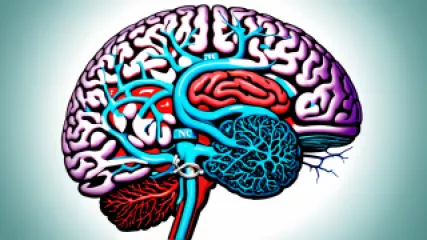Understanding the Science Behind Compulsive Behaviors
Understanding the Science Behind Compulsive Behaviors
Compulsive behaviors, often characterized by a persistent and uncontrollable urge to engage in certain actions, have long been a subject of fascination and study in the scientific community. From gambling addiction to obsessive-compulsive disorder (OCD), these complex psychological phenomena have proven to be both intriguing and challenging to understand. In this comprehensive research summary, we'll delve into the science behind compulsive behaviors, exploring the underlying neurological mechanisms, genetic factors, and environmental influences that contribute to their development and maintenance.
The Neurobiology of Compulsive Behaviors
At the core of compulsive behaviors lies a complex interplay of neural pathways and neurotransmitter systems within the brain. Numerous studies have identified specific regions and circuits that are implicated in the manifestation of these behaviors.
The Role of the Reward System
One of the key factors in the development of compulsive behaviors is the brain's reward system, which is responsible for the feelings of pleasure and satisfaction associated with certain activities. The ventral tegmental area (VTA) and the nucleus accumbens (NAc) are two critical components of this system, as they are involved in the release of dopamine, a neurotransmitter that reinforces and motivates rewarding behaviors.
In individuals with compulsive behaviors, the reward system appears to be dysregulated, leading to an exaggerated response to the anticipation and receipt of rewards. This heightened sensitivity can drive the individual to engage in the compulsive behavior repeatedly, as the brain seeks to maintain this heightened state of pleasure and satisfaction.
The Role of the Prefrontal Cortex
Another key area of the brain involved in compulsive behaviors is the prefrontal cortex, which is responsible for executive functions such as decision-making, impulse control, and cognitive flexibility. Studies have shown that individuals with compulsive behaviors often exhibit dysfunction or abnormalities in the prefrontal cortex, which can lead to a diminished ability to resist urges, inhibit impulses, and make rational decisions.
The prefrontal cortex also plays a role in the regulation of emotions and the processing of reward-related information. Disruptions in these functions can contribute to the development and maintenance of compulsive behaviors, as individuals may have difficulty regulating their emotional responses and making adaptive decisions in the face of temptation or reward-seeking impulses.
The Role of the Amygdala
The amygdala, a small, almond-shaped structure in the brain, is also involved in the processing of emotional information and the regulation of anxiety and fear. Research has shown that the amygdala is often hyperactive in individuals with compulsive behaviors, contributing to the intense emotional responses and heightened anxiety that can drive these individuals to engage in their compulsive actions.
The interplay between the reward system, prefrontal cortex, and amygdala creates a complex neurological landscape that underlies the development and maintenance of compulsive behaviors. Understanding these neural mechanisms is crucial for the development of effective interventions and treatments targeting these conditions.
Genetic Factors in Compulsive Behaviors
In addition to the neurobiological factors, research has also identified a strong genetic component in the development of certain compulsive behaviors, such as OCD, gambling addiction, and substance abuse disorders.
Heritability and Twin Studies
Twin studies have provided valuable insights into the genetic underpinnings of compulsive behaviors. These studies have consistently shown that if one identical twin (who share 100% of their genetic material) has a compulsive behavior, the other twin is at a much higher risk of also developing the same condition compared to fraternal twins (who share 50% of their genetic material). This suggests a significant heritable component to these disorders.
Furthermore, family studies have revealed that individuals with a first-degree relative (parent, sibling, or child) with a compulsive behavior are at an increased risk of developing the same or a related condition, further supporting the role of genetic factors in these disorders.
Candidate Genes and Genome-Wide Association Studies
Researchers have identified several candidate genes and genetic variants that may contribute to the development of compulsive behaviors. For example, studies have found associations between specific genetic polymorphisms in the dopamine, serotonin, and opioid systems and the risk of developing conditions like OCD, gambling addiction, and substance abuse disorders.
Genome-wide association studies (GWAS) have also played a crucial role in uncovering the genetic underpinnings of compulsive behaviors. These studies scan the entire human genome to identify genetic variants that are more prevalent in individuals with a particular disorder compared to those without it. This approach has led to the identification of several novel genetic loci associated with various compulsive behaviors, providing new insights into the complex genetic architecture of these conditions.
Epigenetic Factors
In addition to genetic factors, epigenetic mechanisms, which involve the regulation of gene expression without altering the DNA sequence, have also been implicated in the development of compulsive behaviors. Factors such as early-life experiences, stress, and environmental exposures can lead to epigenetic modifications that can influence the expression of genes involved in the neural pathways underlying compulsive behaviors.
Understanding the interplay between genetic and epigenetic factors is crucial for gaining a comprehensive understanding of the etiology of compulsive behaviors and developing targeted interventions that address both the biological and environmental contributors to these conditions.
Environmental Influences on Compulsive Behaviors
While the neurobiological and genetic factors play a significant role in the development of compulsive behaviors, environmental factors can also contribute to the onset and maintenance of these conditions.
Stress and Trauma
Numerous studies have demonstrated a strong link between exposure to stressful or traumatic life events and the development of compulsive behaviors. Chronic stress can lead to changes in the brain's stress response systems, which can subsequently impact the neural pathways involved in reward processing and impulse control, increasing the risk of compulsive behaviors.
Traumatic experiences, such as childhood abuse, neglect, or other forms of adversity, have also been associated with an increased likelihood of developing compulsive behaviors, including substance abuse, gambling addiction, and OCD. These early-life experiences can shape the brain's development and contribute to the dysregulation of the stress response system, rendering individuals more vulnerable to compulsive behaviors later in life.
Social and Cultural Influences
The social and cultural environments in which individuals live can also play a significant role in shaping their attitudes, beliefs, and behaviors, including the development of compulsive behaviors. For instance, certain communities or social circles may have norms or expectations that promote or even enable compulsive behaviors, such as excessive gambling or substance use.
Furthermore, the media and marketing strategies employed by industries that profit from compulsive behaviors, such as the gambling and gaming industries, can also contribute to the normalization and perpetuation of these behaviors, particularly among vulnerable populations.
Availability and Accessibility
The availability and accessibility of activities or substances associated with compulsive behaviors can also influence the development and maintenance of these conditions. For example, the proliferation of online gambling platforms, the ubiquity of fast food restaurants, or the ease of accessing certain addictive substances can all contribute to the increased prevalence of compulsive behaviors.
By understanding the complex interplay between environmental factors, such as stress, social influences, and accessibility, and the underlying neurobiological and genetic mechanisms, researchers and clinicians can develop more comprehensive and effective interventions to address compulsive behaviors.
Interventions and Treatment Approaches
Given the multifaceted nature of compulsive behaviors, a range of intervention and treatment approaches have been developed to address these conditions. These approaches often target the various contributing factors, including neurobiological, genetic, and environmental, in an effort to promote lasting change and recovery.
Cognitive-Behavioral Therapy (CBT)
Cognitive-behavioral therapy (CBT) has been widely recognized as an effective treatment for compulsive behaviors, such as OCD, gambling addiction, and substance abuse disorders. CBT aims to identify and modify the maladaptive thought patterns and behaviors that perpetuate the compulsive behaviors, helping individuals develop healthier coping strategies and decision-making skills.
Through techniques like exposure and response prevention, CBT can help individuals gradually confront and overcome their compulsive urges, while also addressing the underlying cognitive distortions and emotional factors that contribute to the behavior.
Medication-Assisted Treatments
In addition to psychological interventions, pharmacological treatments have also been developed to address the neurobiological factors underlying compulsive behaviors. Medications targeting neurotransmitter systems, such as selective serotonin reuptake inhibitors (SSRIs) for OCD or opioid antagonists for gambling addiction, have been found to be effective in reducing symptoms and supporting recovery.
Furthermore, the integration of medication-assisted treatments with psychosocial interventions, such as CBT, has been shown to be particularly effective in addressing the multifaceted nature of compulsive behaviors.
Mindfulness and Acceptance-Based Approaches
Emerging evidence suggests that mindfulness-based interventions and acceptance-commitment therapy (ACT) can also be beneficial in the treatment of compulsive behaviors. These approaches aim to cultivate present-moment awareness, acceptance, and psychological flexibility, which can help individuals manage their compulsive urges and develop more adaptive coping strategies.
By fostering a non-judgmental, accepting attitude towards their thoughts and feelings, individuals with compulsive behaviors can learn to respond to their urges with greater self-compassion and flexibility, rather than engaging in the compulsive behavior as a means of emotional regulation or avoidance.
Comprehensive and Integrated Approaches
Given the complexity of compulsive behaviors, a comprehensive and integrated approach that addresses the neurobiological, genetic, and environmental factors is often recommended. This may involve a combination of evidence-based interventions, such as CBT, medication-assisted treatments, and mindfulness-based approaches, tailored to the individual's specific needs and circumstances.
Additionally, the involvement of supportive social networks, such as family members or peer support groups, can be instrumental in the recovery process, as they can provide emotional support, accountability, and practical strategies for navigating the challenges of compulsive behaviors.
Conclusion
Compulsive behaviors are multifaceted phenomena that arise from a complex interplay of neurobiological, genetic, and environmental factors. By delving into the science behind these conditions, we can gain a deeper understanding of the underlying mechanisms and develop more effective interventions and treatments.
Through continued research and the integration of various evidence-based approaches, mental health professionals and researchers can work towards providing comprehensive and personalized support for individuals struggling with compulsive behaviors, ultimately empowering them to regain control and cultivate healthier, more fulfilling lives.
Remember, the use of or should be limited to only 1 or 2 words at most in each paragraph to ensure effective emphasis without compromising readability. Additionally, do not include any links or advertisements within the article content.






